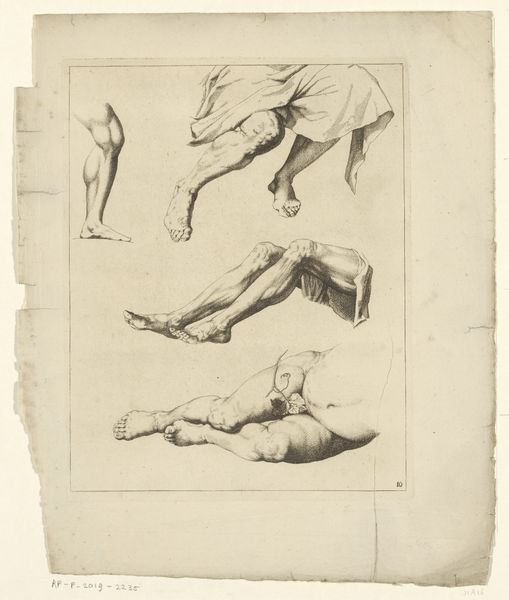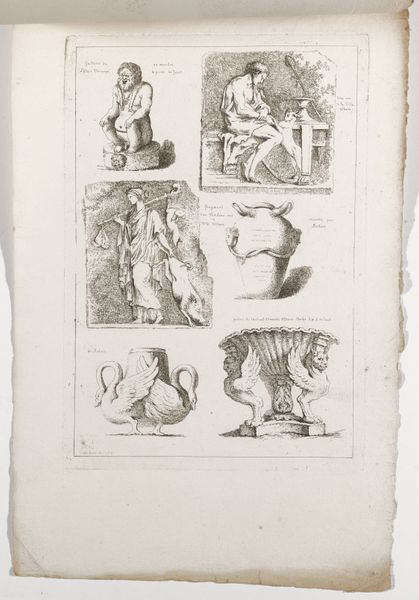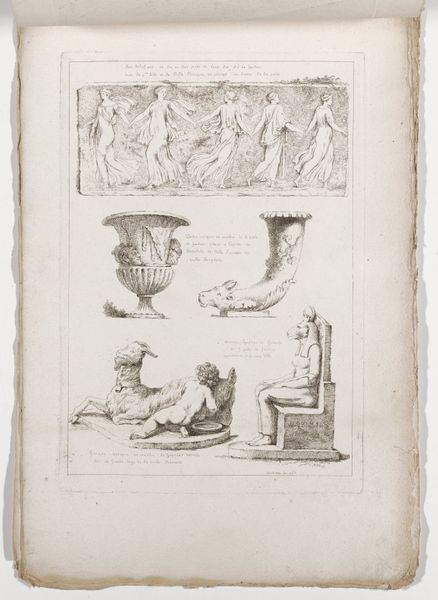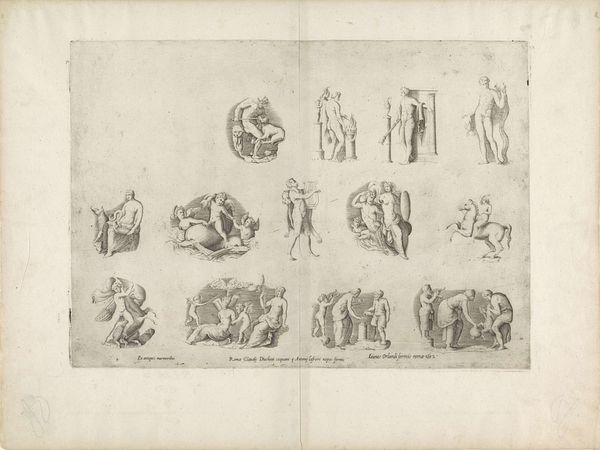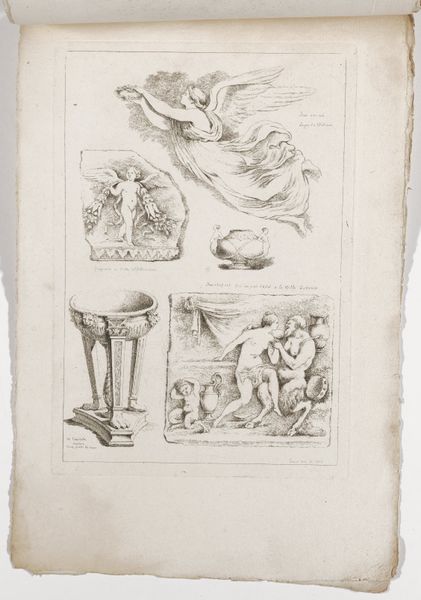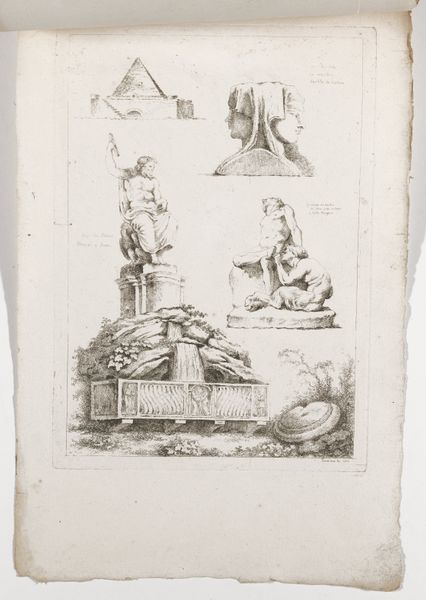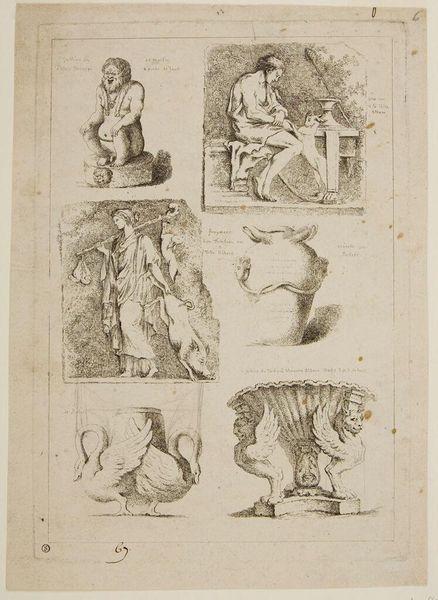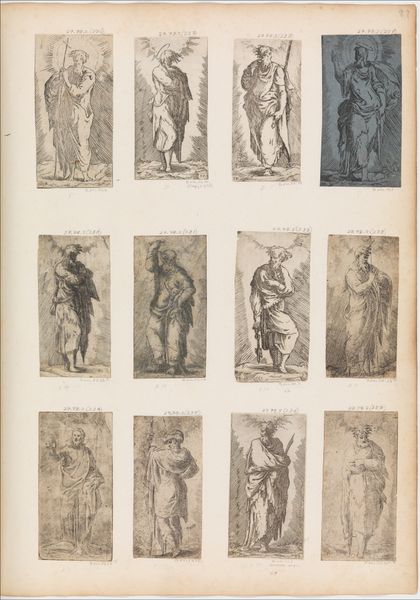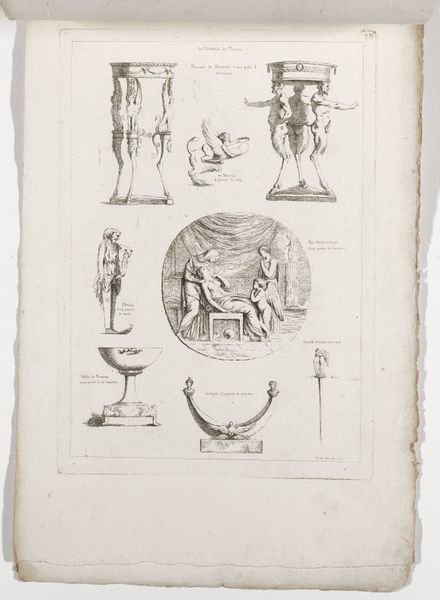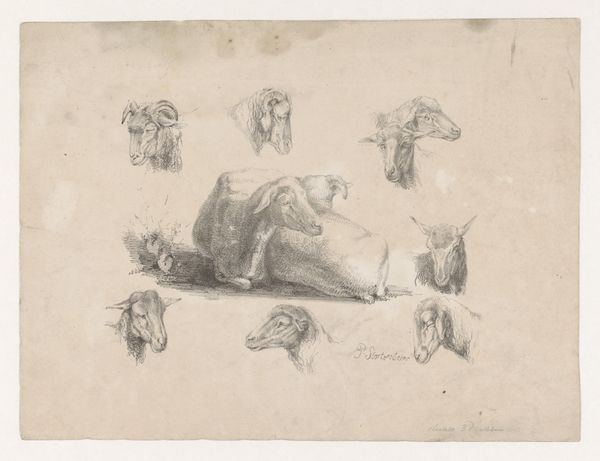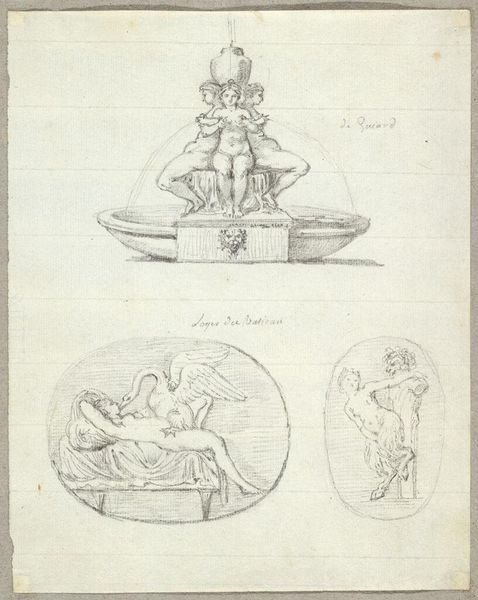
drawing, print, etching, engraving
#
drawing
# print
#
etching
#
greek-and-roman-art
#
classical-realism
#
etching
#
figuration
#
history-painting
#
academic-art
#
engraving
Dimensions: 12 3/4 × 9 in. (32.39 × 22.86 cm) (plate)17 5/16 × 11 1/8 in. (43.97 × 28.26 cm) (sheet)
Copyright: Public Domain
Curator: What immediately strikes me is the stark, almost ghostly quality of this image. It feels like peering into a collection of fading memories. Editor: You're right, there is a spectral quality. This is "Fascicule II", an etching and engraving dating back to 1763, by Jean Claude Richard, Abbé de Saint-Non, currently held at the Minneapolis Institute of Art. What grabs my attention is how this compilation emphasizes reproduction as labor—it speaks to the sheer effort of transferring three-dimensional objects into two-dimensional print. Curator: I see the influence of Greek and Roman art strongly here. The poses, the drapery, even the object selection clearly point back to antiquity, but do you get a sense of it feeling almost… repurposed? They feel like echoes filtered through a later sensibility. Editor: Absolutely. Consider the materials. Etching and engraving allowed for relatively inexpensive reproduction. Prints like these disseminated classical forms, but in doing so, they became commodities, entering a cycle of production and consumption that inevitably alters their original meaning. The artistic skill, or lack thereof in comparison to other renditions, is critical to remember when we analyze pieces such as these. Curator: Indeed. What I find fascinating is the careful selection of figures – a winged figure holding flowers, a reclining male nude, several draped female forms, plus vessels. These forms were so embedded in the visual language of the time, communicating virtue, beauty, and authority. They're loaded with symbolic intent, like a portable kit of cultural values. Editor: But that "kit" comes with baggage. Mass reproduction inevitably meant variable quality and wider accessibility. Did this democratize access to art and culture, or did it cheapen it, turning these once-revered symbols into decorative motifs, mere fodder for domestic consumption? The paper used also suggests something of its place of creation, doesn't it? Curator: It is thought-provoking. Perhaps it did both, simultaneously. I see both the preservation and the erosion of meaning within these delicate lines. Editor: Precisely. By analyzing the print's materiality and its place within the economic and social fabric of the time, we can start to understand how these classical forms were not just passively received but actively transformed through the very process of reproduction. Curator: A ghostly, haunting reminder that images aren't fixed but continually renegotiated across time. Editor: And a powerful lesson about how artistic mediums play their own critical role in constructing meaning.
Comments
minneapolisinstituteofart almost 2 years ago
⋮
The Jean-Baptiste Claude Richard (also known by his title abbé Saint-Non) embodied the important role of the amateur, an patron and connoisseur of the arts as well as a practitioner in 18th-century France. He was a skilled networker, a curious, innovative printmaker, and he supported his artist friends in their projects and travels. Saint-Non executed this suite of prints in Paris in 1763, representing antique fragments and reliefs he saw during his travels in Italy from 1759 to 1761. Most of the monuments are identified in the inscriptions by their locations in Rome. The works reflect French artists’ fascination with antiquity at the time, and the way in which these sources were transmitted to a larger public through the circulation of prints. Remarkably the suite of etchings remain as originally issued, in three groups of six deckle-edged sheets stitched together simply along the top edge.
Join the conversation
Join millions of artists and users on Artera today and experience the ultimate creative platform.

